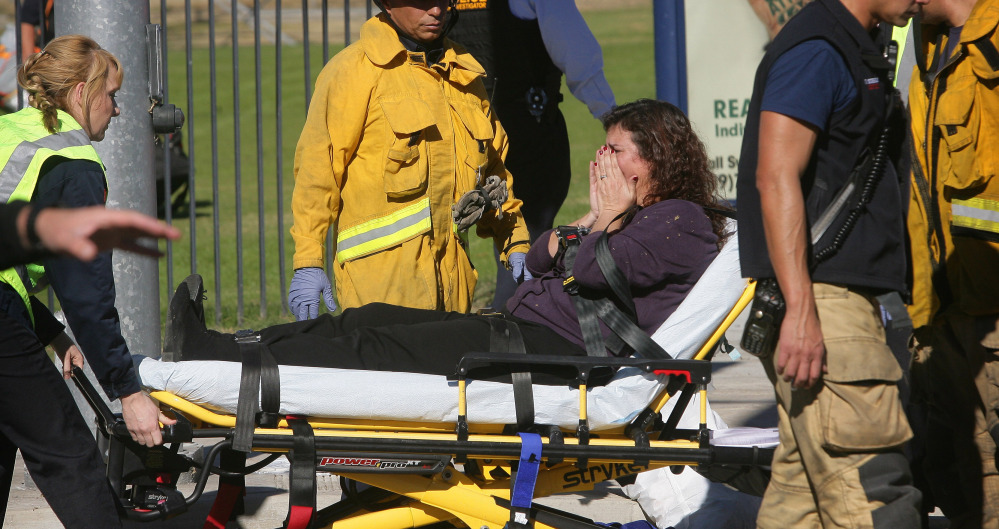The shooting last week in San Bernardino, California, gripped the nation, and has dominated the national discourse in the days since. And it should have – the heartless murder of 14 innocent people and the wounding of 21 more in the most mundane of settings – a work gathering – is extraordinary.
That’s also why it alone shouldn’t drive our response to the problems of mental illness and gun violence, the complicated intersection of which is heavily debated but little understood.
Instead, we need to separate the mass shootings from the daily toll of homicides, suicides and accidents related to firearms.
Even more, we should separate mass shootings driven by ideology, as in the shootings at the Planned Parenthood and, apparently, in San Bernardino, from indiscriminate slaughters such as the Colorado movie theater tragedy.
KEY DIFFERENCES
They are all different in key ways, and although there is some overlap, they likely have different solutions. Lumping them all together just locks us into a reactive, circular argument about motives, causes and solutions, and gets nothing done.
With each mass shooting, Americans wait for details that confirm their bias – the shooter’s ethnicity or political leanings, the state of his mental well-being, the origin of his weapons.
But that just leads to false conclusions: Stronger background checks wouldn’t have stopped this shooting, so they are useless for all shootings. An assault weapon ban didn’t stop this shooter from obtaining one, so bans are pointless. A person bent on killing is going to kill.
That happened last week, as gun control advocates pleaded for new restrictions while the California shooting unfolded.
Then, as the shooters’ ties to radical Islam were reported, the revelation was used to divert attention away from gun violence and toward the ideological threat.
Following the Paris attacks, that threat can’t be underestimated, but it shouldn’t be overestimated, either.
Since the attacks of Sept. 11, 2001, more Americans have been killed in attacks by non-Islamic extremists than by Islamic extremists, 48 to 45.
And then there are the seemingly random shootings, such as the ones at Virginia Tech or Sandy Hook Elementary.
Each example is different, and requires a different response.
But the deaths from all those mass shootings are absolutely dwarfed by the total number of gun deaths, an average of about 85 a day, plus another 200 or so injuries.
DAILY CARNAGE
There can be no question that the number of guns in the United States contributes to the daily carnage, particularly with suicides, which make up most of the deaths and become much more likely when a gun is present. (Mental illness does, too, but for all the blame mental health receives, treatment funding across the country continues to fall.)
There can be no question that the rate of gun homicides in U.S. cities with tight firearm restrictions is driven by, yes, poverty and other factors, but also by the wide availability of firearms from nearby states with lax gun laws.
And there can be no question that firearm homicides drive the U.S. murder rate, making it greater than that of other developed countries by a troubling amount.
Those are the facts, and they will continue to be, through the next mass shooting and beyond, until we finally decide to take real action.
Send questions/comments to the editors.



Success. Please wait for the page to reload. If the page does not reload within 5 seconds, please refresh the page.
Enter your email and password to access comments.
Hi, to comment on stories you must . This profile is in addition to your subscription and website login.
Already have a commenting profile? .
Invalid username/password.
Please check your email to confirm and complete your registration.
Only subscribers are eligible to post comments. Please subscribe or login first for digital access. Here’s why.
Use the form below to reset your password. When you've submitted your account email, we will send an email with a reset code.